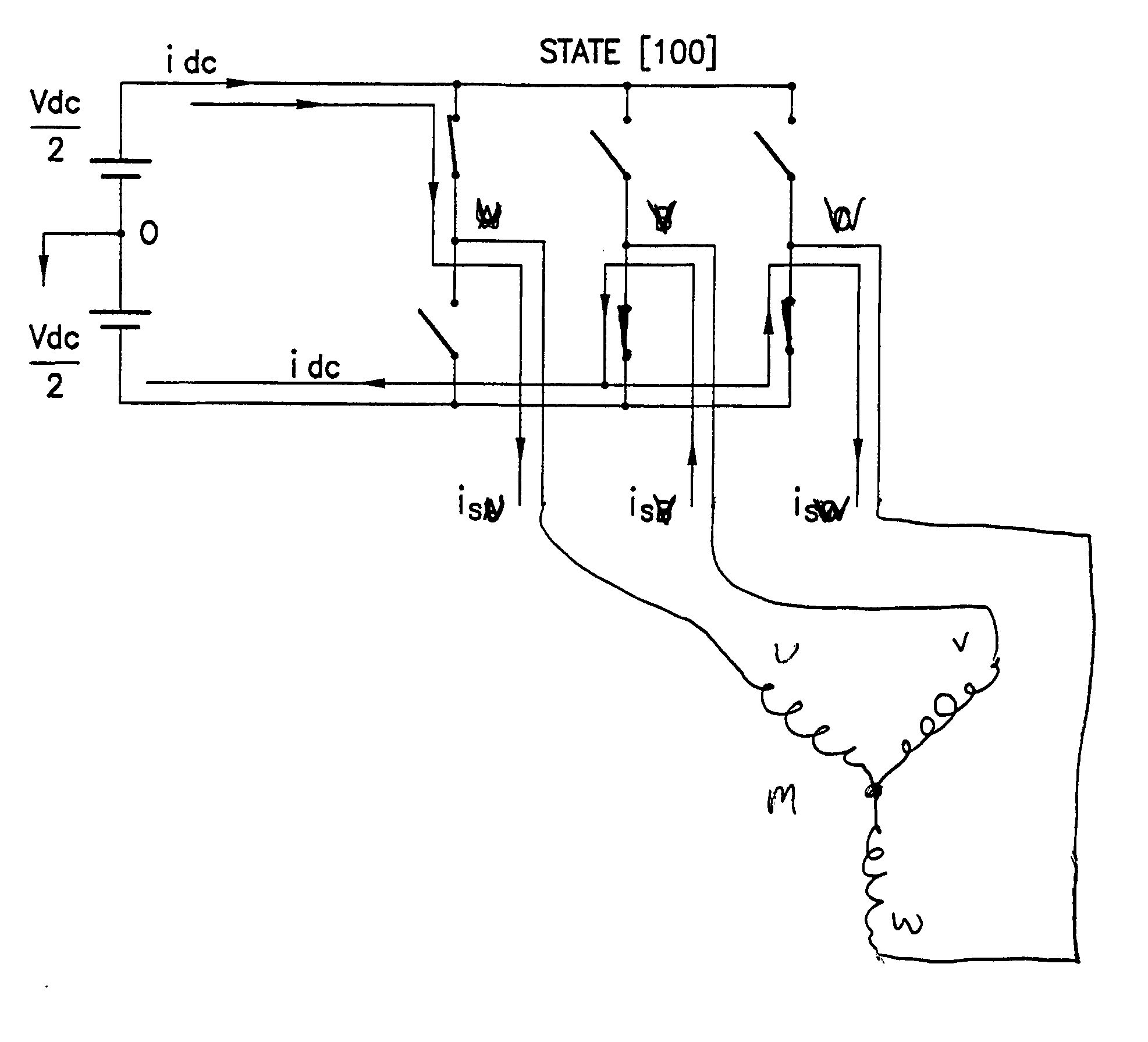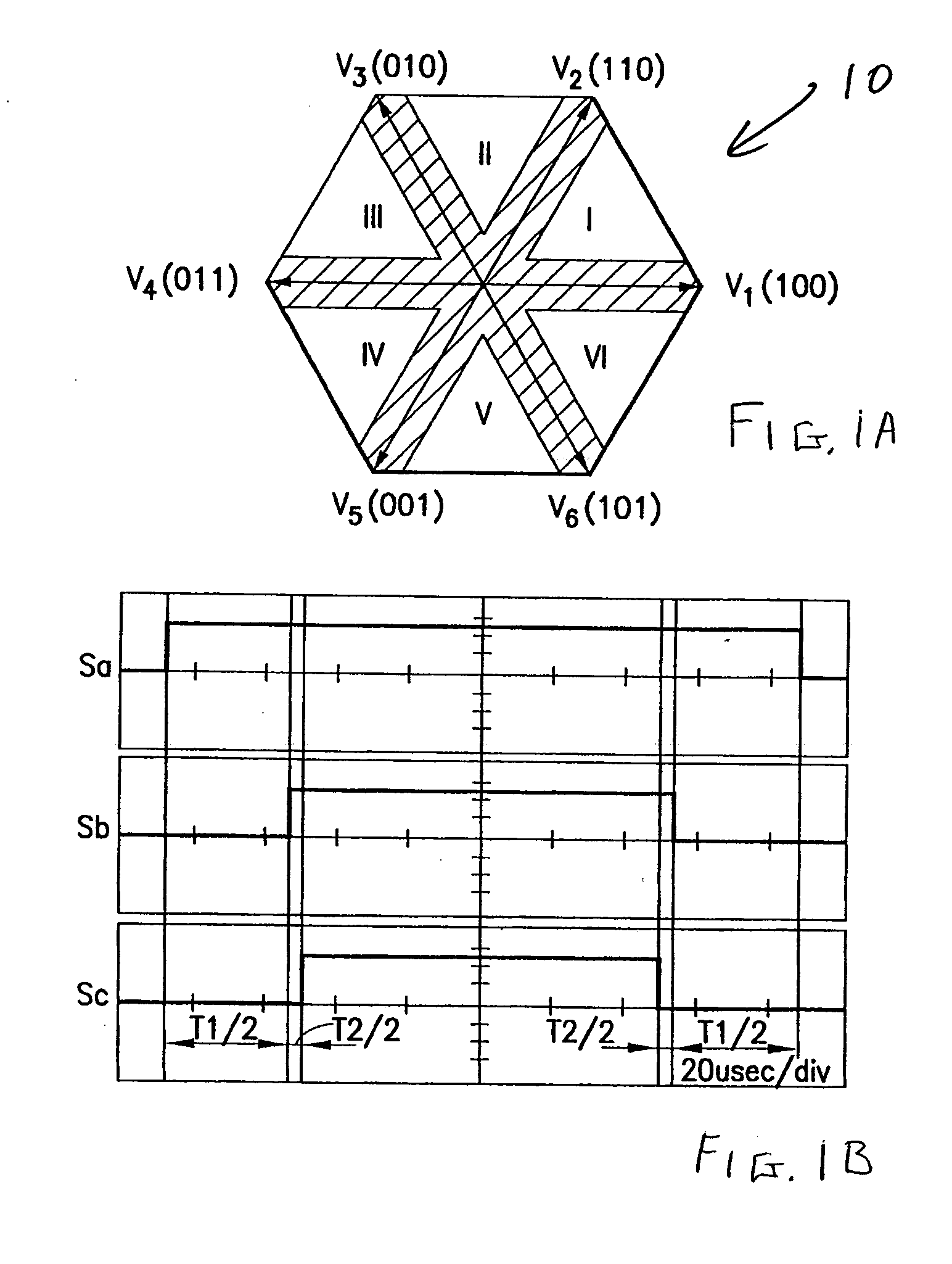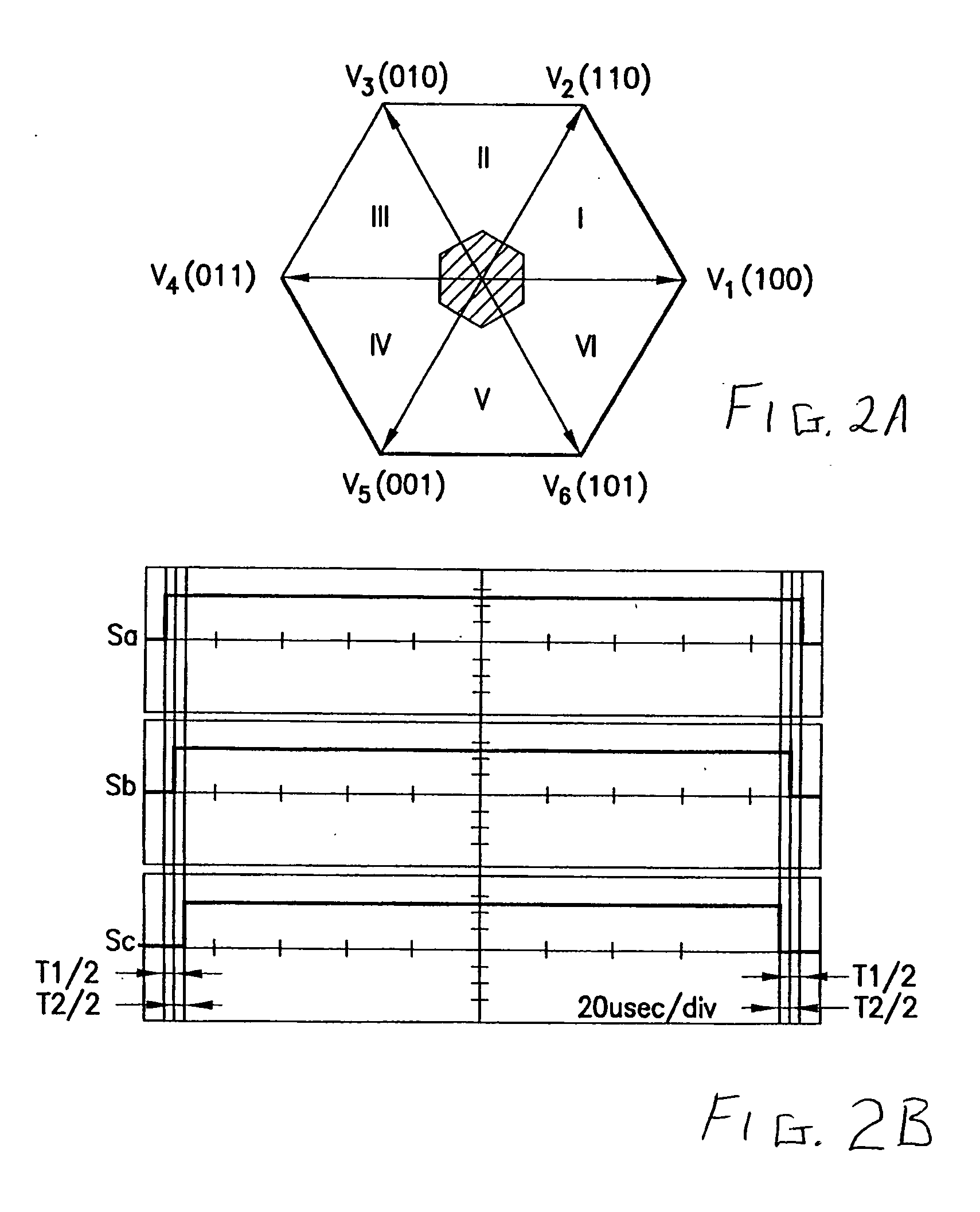Motor current reconstruction via DC bus current measurement
- Summary
- Abstract
- Description
- Claims
- Application Information
AI Technical Summary
Benefits of technology
Problems solved by technology
Method used
Image
Examples
Embodiment Construction
[0042] In a two level PWM inverter drive system, eight possible basic voltage vectors can be produced, including two zero basic voltage vectors 000 and 111. The non-zero basic voltage vectors are represented in the vector diagrams of FIGS. 1A, 2A and 4 and indicate states for a 2-level PWM inverter, such as that illustrated in FIG. 5. In the inverter of FIG. 5, the switches are shown in basic voltage vector state V1, or 100.
[0043] Any desired command voltage vector can be formed by the eight basic voltage vectors. The desired command voltage vector is limited by the maximum output voltage of the inverter, as determined by the DC bus voltage level. In a PWM inverter drive system, motor phase current information can be determined from the DC bus current when non-zero basic vectors are used, such as in the case illustrated in FIG. 5. Each basic vector is assigned a specific time in a PWM cycle to generate a command voltage vector. If the command voltage vector is used only for a very ...
PUM
 Login to View More
Login to View More Abstract
Description
Claims
Application Information
 Login to View More
Login to View More - R&D
- Intellectual Property
- Life Sciences
- Materials
- Tech Scout
- Unparalleled Data Quality
- Higher Quality Content
- 60% Fewer Hallucinations
Browse by: Latest US Patents, China's latest patents, Technical Efficacy Thesaurus, Application Domain, Technology Topic, Popular Technical Reports.
© 2025 PatSnap. All rights reserved.Legal|Privacy policy|Modern Slavery Act Transparency Statement|Sitemap|About US| Contact US: help@patsnap.com



